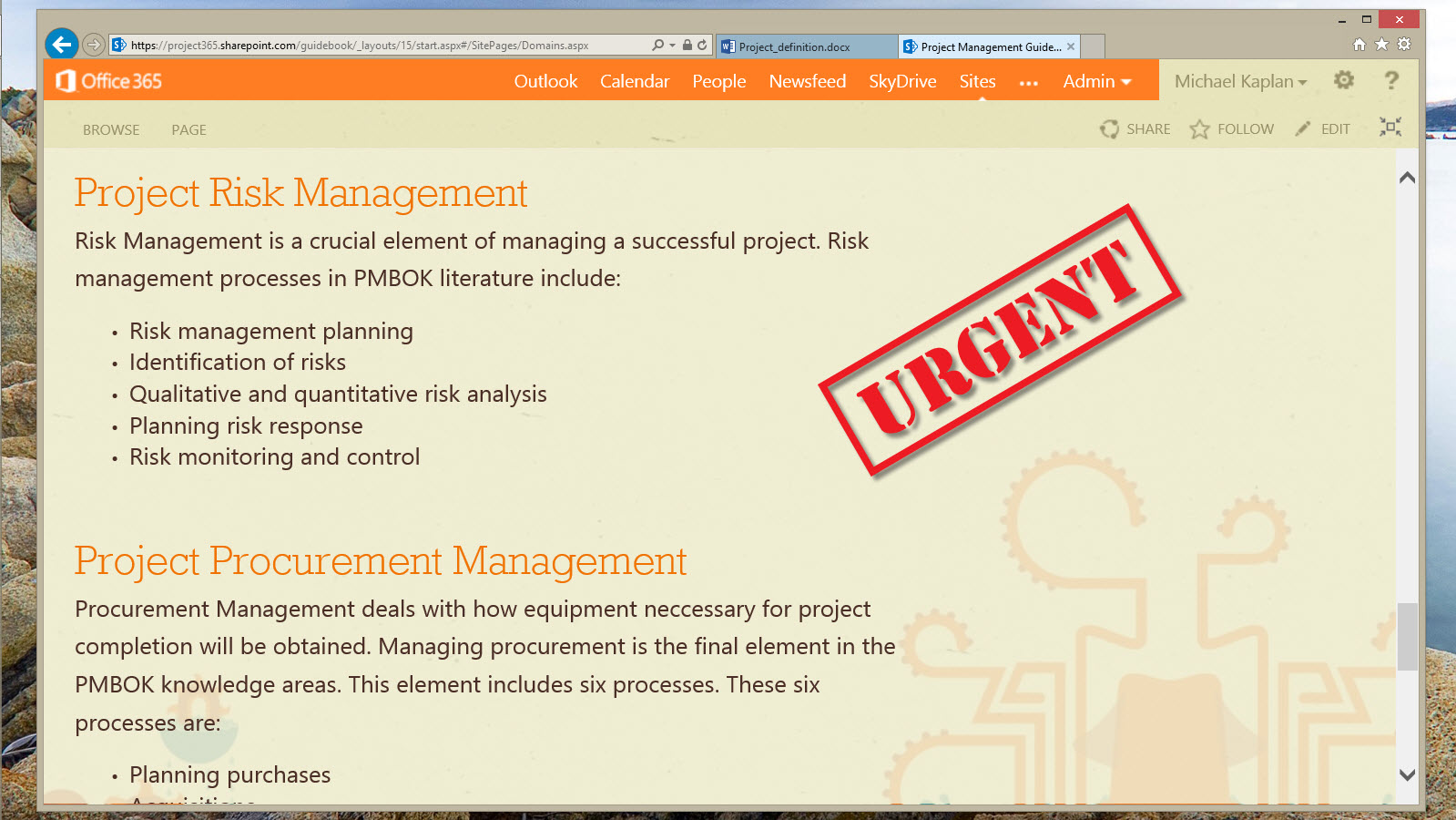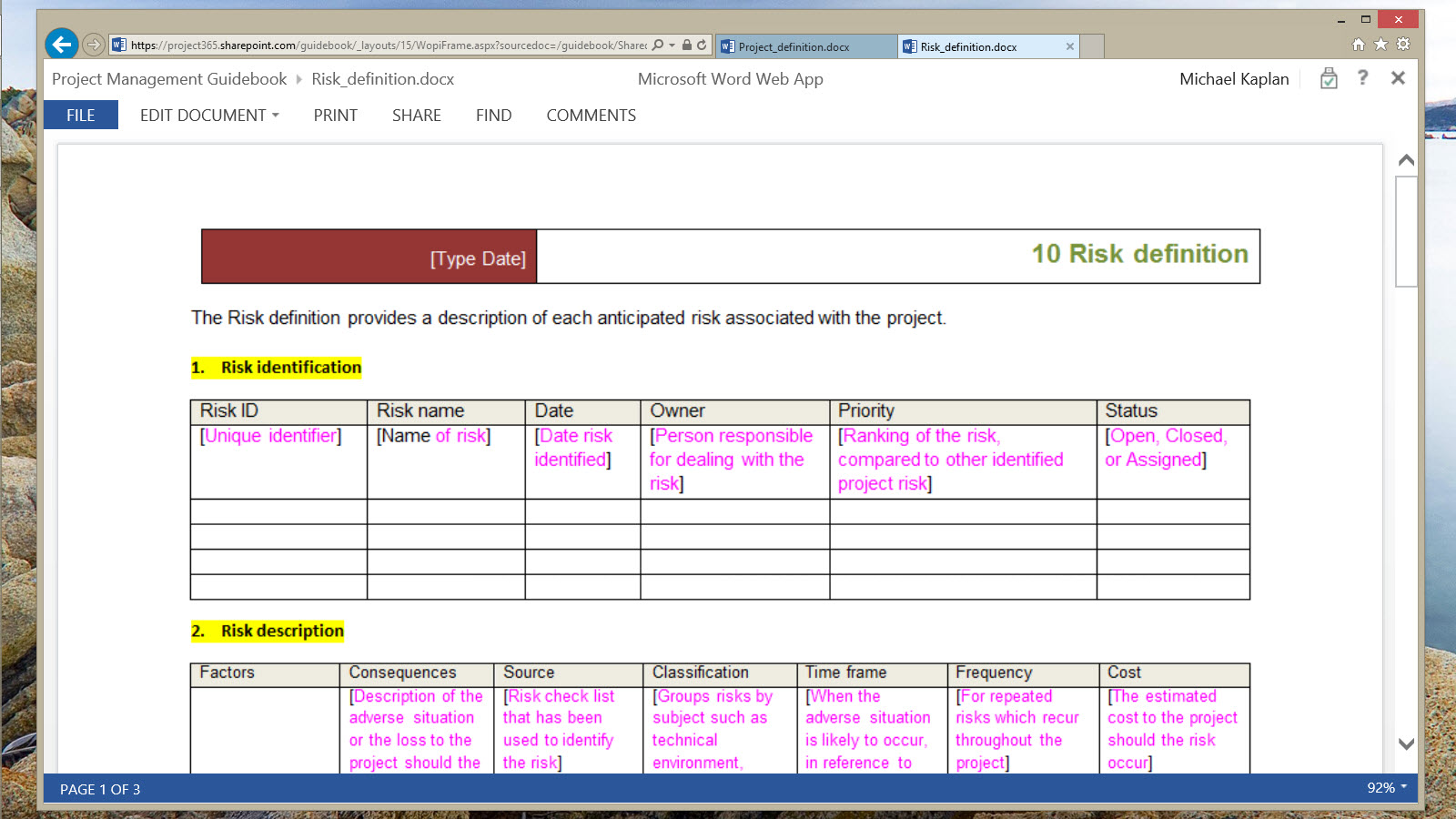Project Risk Management

Identify showstoppers prior to considering project approval.
The ability for project teams to collaborate—across functions, time zones, and organizational boundaries—is a key critical success factor.
Forbes Insights

Systematically manage project risk through a process of planning, identifying, analyzing, responding to, monitoring and controlling events, or areas that have the likelihood to cause unwanted change. Record and manage Project and deliverable risks in a centrally located area.
Continuously asses and communicate risk to the project.
Practices
- Establish a formal project risk management framework to handle each risk identified in a project, at any time during the project, with full traceability.
- Ensure that each identified risk has an owner. Assign properly skilled personnel with the responsibility for executing the project risk management system. Consider allocating this role to an independent team, especially if an objective viewpoint is required or a project is considered critical.
- Identify, analyze, respond to, mitigate, monitor and control project risks. Perform the project risk assessment continuously throughout the project. Handle and communicate risks as defined in the project governance structure.
- React to risk occurrences, based on the Risk management plan. Assess project risks frequently, including at the beginning of each major project phase and during part of the change request process.
- Maintain the Risk management plan. Identify risk and action owners for responses to avoid, accept or mitigate risks.
- Provide comprehensive risk status data. Maintain and review a project risk register of all potential project risks, and maintain a log of all project actions and their resolution. Analyze the log frequently for trending and recurring problems. Ensure root cause concerns are corrected.
- Decreased probability of risk occurrence and to minimize the negative impact of risk occurrence
- Planned risk responses for risk occurrence, including contingency plans, strategies, activities, and budgets for handling tasks
- Contingency reserves set aside to handle risk affecting project costs and schedules
- Additional management reserves set aside to deal with risks yet to be identified
- Insurance coverage of loss due to a risk occurrence at no additional cost to the project
- Increased project risk considerations which may have been avoided or decreased through handling of planned mitigation actions
- Lack of preparation for the project being prepared to react to risks when they do occur
- Insufficient funds in the project budget to react to risks when they occur













